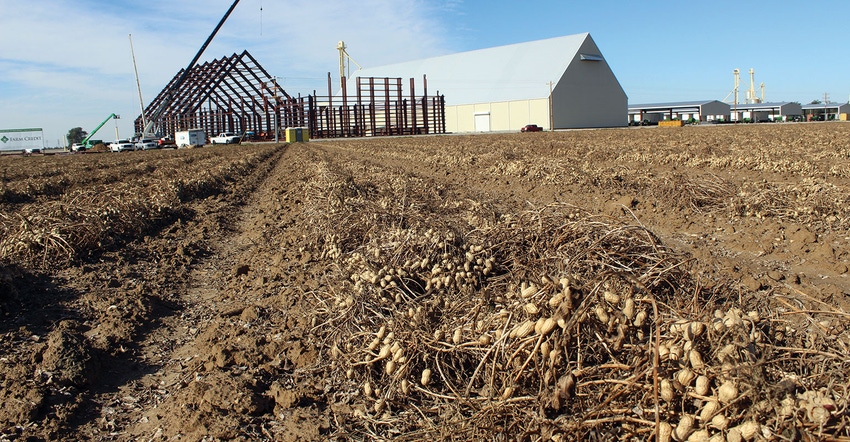
A new peanut buying point now operating just outside of Marianna, Ark., is giving east central Arkansas farmers another important row crop option.
After trucking peanuts to Aberdeen, Miss., the buying point in Portia, Ark., or the buying point in Greenwood, Miss., peanut farmers in east central Arkansas are welcoming the new facility. “This buying point is so strategically located for growers in our area,” says Jason Felton, whose family is part of the group supporting the project. “Not long after we sent out our request for bids, we received a call from Tommy Jumper, the CEO of Delta Peanut. Tommy heard about our intentions and told us he had been working on a much bigger plan for peanut facilities around Arkansas, including building a shelling plant in Jonesboro.”
Equipment, financing, and plans
Peanuts can come from the field with high foreign matter content which must be separated. LMC Manufacturers makes separators, cleaners, elevator legs, dryers, and nearly every other piece of equipment required at a buying point. “LMC’s owner, Lewis M. Carter, put Tommy and my family together, and that’s when we took a step back and let Tommy really get the ball rolling on his much larger vision for Delta Peanut,” Felton says. “Delta Peanut is a conglomerate of about 70 owners. Some are landlords, but most are growers.”
Jumper arranged financing for the project through Farm Credit. A substantial amount of capital needed had to be contributed by the producers. “Once we were able to gather funding to trigger the Farm Credit loan, it then allowed the purchase of the first two buying points and the sheller,” Felton says. “The loan program will pay our producers for their peanuts. We’ll also receive some income for owning the company. Now, in addition to having buying points here in Marianna and in Jonesboro, we’ll have a shelling plant at the Jonesboro location as well.”
USDA graders will be on site at the buying point to pull samples and make sure the peanuts meet all specifications and approvals before they are transferred to the buying point warehouse,” Felton says. “They will remain there until transported to the shelling facility in Jonesboro, where they will be shelled and placed in cold storage.”
One warehouse at the Marianna, Ark., buying point is almost half full of peanuts from this year’s harvest, and the second warehouse is expected to be completed by the middle of November. In the meantime, the group has rented a warehouse in McCrory, Ark., where the second half of this year’s crop will be stored.
Felton is seeing greater profitability in peanuts than in cotton. The timing of cotton and peanut harvest has always overlapped and caused logistics problems for growers. “Thanks to the new harvesters and round modules they produce, we are essentially trading the labor over to our peanut operation that we formerly needed in our cotton operation,” Felton says. “We’re running five peanut combines and two carts on our 2,000 acres of peanuts.”
According to USDA’s National Agricultural Statistics Service, the 2018 Arkansas peanut harvest was valued at over $21.1 million from 26,000 planted acres, of which only 23,000 acres were actually harvested due to an extremely wet fall. The average state yield was 5,000 pounds per acre. “Based on preliminary numbers that I’m hearing, it looks like we could harvest around 34,000 acres of peanuts across the state this year,” Felton said.
About the Author(s)
You May Also Like




